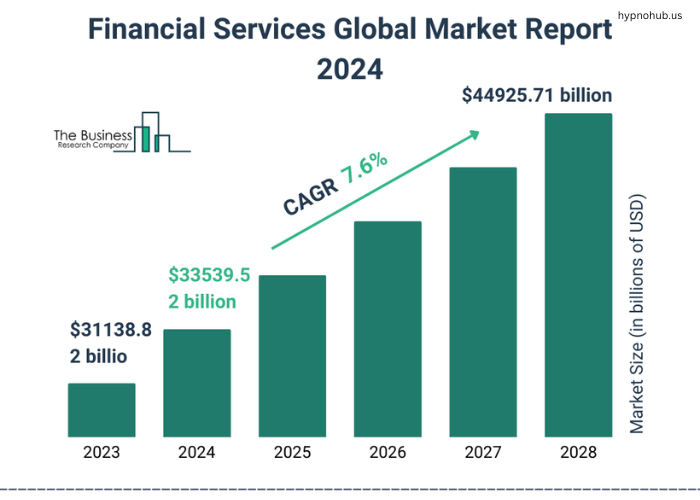In 2024, the global investment landscape is shaped by a range of macroeconomic, geopolitical, and technological trends. Investors are adjusting their strategies to navigate an environment marked by uncertainty, inflationary pressures, and shifting consumer behaviors. As the world recovers from the COVID-19 pandemic and faces the ongoing effects of climate change, new opportunities and risks are emerging across different asset classes. Here’s a breakdown of the key trends impacting global markets and investments.
1. Inflation and Central Bank Policies
Inflation has remained a key concern for global markets, with central banks, particularly in developed economies, adjusting their monetary policies accordingly. After years of ultra-low interest rates, the U.S. Federal Reserve, European Central Bank (ECB), and Bank of England have implemented tighter monetary policies to combat inflationary pressures. While these policies have curbed inflation to some extent, they have also raised borrowing costs, creating challenges for businesses and consumers alike.
For investors, high interest rates can slow down economic growth and impact the performance of equities, particularly those of growth-oriented companies. Bonds, however, have become more attractive as yields rise, although they still face risks from inflation and interest rate volatility.
2. Geopolitical Tensions and Market Volatility
Geopolitical tensions are another significant factor influencing investment decisions. Ongoing conflicts, such as the war in Ukraine, and rising tensions between major powers like the U.S. and China, have created uncertainty in global markets. The ripple effects of these geopolitical issues can lead to supply chain disruptions, energy price fluctuations, and capital flight.
Investors are increasingly focusing on diversifying their portfolios to hedge against geopolitical risks. This has driven interest in safe-haven assets like gold, as well as investments in regions and sectors less exposed to geopolitical instability.
3. Sustainability and ESG Investing
Environmental, Social, and Governance (ESG) investing has been one of the most notable trends in recent years and is expected to continue growing in 2024. Consumers and investors alike are increasingly prioritizing sustainability and ethical considerations in their decision-making.
Governments and corporations are adopting more stringent regulations around carbon emissions, resource management, and social responsibility, which is prompting investors to place more emphasis on ESG criteria. Companies with strong ESG practices are being seen as better positioned for long-term success, as they may face fewer regulatory challenges and appeal to a growing pool of conscientious investors.
This trend is especially pronounced in sectors like renewable energy, electric vehicles, and sustainable agriculture, which are expected to see continued investment growth.
4. Technology and Innovation
The rapid advancement of technology is another trend reshaping the investment landscape. Artificial intelligence (AI), blockchain, and the Internet of Things (IoT) are just a few of the transformative technologies that are poised to drive significant change in industries across the board. These technologies not only create opportunities for new startups but also offer established companies avenues for growth and expansion.
For investors, sectors such as tech, biotech, and cybersecurity are expected to remain high-growth areas. However, they also come with risks, particularly in the case of regulatory scrutiny (e.g., data privacy laws) and market volatility in emerging tech stocks.
5. Emerging Markets and Global Trade Shifts
Emerging markets (EMs) have long been a focal point for investors seeking high-growth opportunities. However, the COVID-19 pandemic and the subsequent recovery have changed the dynamics of global trade, influencing where capital is flowing. Countries in Asia, Africa, and Latin America are increasingly seen as key players in global supply chains and consumption patterns.
China’s slowing economic growth and the rebalancing of its economy are altering its role in the global marketplace, leading some investors to explore other emerging markets like India, Brazil, and Vietnam. Additionally, the reshoring and diversification of supply chains in response to trade tensions and disruptions have created new opportunities in emerging economies.
6. The Rise of Digital Assets
Cryptocurrencies and other digital assets, once viewed as speculative, have grown in significance in recent years. Institutional interest in blockchain-based assets has increased, and the development of central bank digital currencies (CBDCs) is on the rise. While the volatility of digital currencies such as Bitcoin and Ethereum continues to deter some investors, others view them as a hedge against inflation and currency debasement.
As governments and financial institutions start to regulate digital assets more robustly, investors may gain more confidence in these markets. Additionally, decentralized finance (DeFi) platforms are gaining traction as they offer alternatives to traditional financial services.
7. Global Demographic Shifts
Demographic changes are also shaping global markets. Aging populations in developed countries, coupled with growing youth populations in developing regions, are creating imbalances in demand and labor markets. For instance, the aging demographic in Europe and Japan places pressure on pension systems and healthcare sectors, presenting both risks and opportunities for investors.
Meanwhile, the young populations in emerging markets are driving consumption patterns, especially in sectors such as e-commerce, entertainment, and financial services. Investors are paying closer attention to demographic trends, as they can influence the direction of industries and economies over the long term.
Conclusion
The global investment landscape in 2024 is complex, with numerous factors influencing market behavior. Inflationary pressures, geopolitical tensions, and the rise of new technologies and sustainable investing are just a few of the elements shaping the current environment. As investors navigate these trends, diversification, risk management, and a keen eye on long-term growth opportunities will be crucial to building resilient portfolios. With the right strategies, investors can capitalize on emerging opportunities while mitigating the risks posed by an increasingly interconnected and volatile world.





